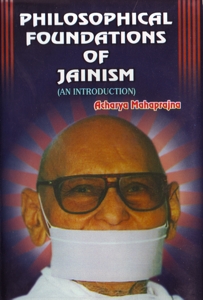Since time immemorial the question—"What is truth?" is being asked and debated vehemently. We see an earthen pot. Its shape is a physical reality for some time, but some other day by accident or wear and tear it turns itself into soil of the mother earth. Now, what is the true state of it, which is the everlasting state of it—pot or clay? Jain philosophers have resolved this issue by suggesting that we look at each of the two states not in a fragmented way but as an integrated whole, which is possible only through Anekānta i.e., a multi-faceted point of view. There are two ways to look at a thing - (A) Dravyarthika or substantial (describing a thing only with respect to its ultimate substance) and—(B) Paryāyārthika or modal (description based on modifications or change of modes). In other words, the two are called 'Niścaya-dṛṣṭi' (transcendental view) and 'Vyavahāra-dṛṣṭi' (empirical view) respectively. When we correlate both views, we find that in both states, i.e., pot and soil, the 'paramāṇu', which is the ultimate indivisible unit of the physical substance remains intact while the change takes place in the form only. The Jain philosophy believes that the 'pudgala' i.e., the physical substance, which is the substratum of all physical objects, would always remain 'pudgala' since no change in the substance itself would be possible. However, the process of transformation which goes on I-very moment in any substance enables it to take different forms.
The basic element in the matter and its changing states both remain and work in unison. Both co-exist. The former is realised by the 'Dravyārthika Naya' and the latter by the 'Paryāyārthika Naya'. The latter is concerned with the 'change' as the reality, while the former with the view which always catches only the 'permanence' as the reality. Buy to adhere to only one of them would be only a partial view. The two cannot be separated.
Now, regarding the lop-sided views, the Jain philosophers state that we can not manage the affairs of this world only on the basis of the lop-sided views. For, there are three aspects of our worldly affairs—'Pravṛtti' (indulgence)—'Nivṛtti' (abstinence) and 'Taṭasthata' (neutrality). We indulge in any activity to attain happiness; we abstain from whatever is painful; we remain neutral if there is neither happiness nor pain. As this trinity of activity, non-activity and neutrality comprise our worldly affairs, so also creation, cessation and permanence cause happiness to one, pain to another, and neither of the two i.e., neutrality for the third one, respectively. An illustration would make the idea clear. Once three persons simultaneously approached a goldsmith. They wanted to buy a golden crown, a golden jar and pure gold in any form respectively. At that time, the goldsmith was busy in manufacturing a golden crown which he was moulding from the gold obtained from an old golden jar. When the three persons went there, the one who wanted the crown was very happy that the crown was being made; the second who wanted the golden jar was very sad to see that the jar was broken; the third one was interested only in buying gold irrespective of its form, so he remained neutral—neither happy nor sad. Applicaton of this illustration is required to understand the trinity of creation, cessation and permanence.
If there is no change in the world we cannot survive and maintain the continuity of life. The Jain philosophy explained through the two nayas this phenomena in respect of the 'pudgala', which changes its forms continuously but still maintains its identity as 'pudgala'.
Any object or a thing has two attributes—first is its integrated state as a whole and the other is its ability to break into innumerable fragments. Comprehending the whole the synthetic view—that is 'Dravya Dṛṣṭi' and to look at things in piecemeal way is the 'Paryāya Dṛṣṭi'. An earthen lamp burns continuously, although the flames come and go one after the other. So is the case with water flowing into a river. It is the theory of relativity which combines the two features—'Dravya' and 'Paryāya '. We can thus explain the duality of 'Pudgala' alongwith its basic integrity, only by adopting the 'Anekānta', the multi-angular vision, which takes into account the relativity. Jainism proclaims:—
"Je egaṃ jānai se savvaṃ jānai,
Je savvaṃ jānai se egaṃ jānai."
"He who knows one, knows all and the vice-versa."
Our world is united through various kinds of relationships. 'Vasudhaiva kuṭumbakaṃ' means—the world is like a family. It is a great philosophical exposition. It can be realized only through a synergie of both view-points—physical and intrinsic. The Jain philosophers have described the two as 'Vyavahāra Naya' (practical view) and 'Niścaya Naya' (scientific view) respectively. When you merge the view-points which you get from both the 'Nayas', you can then comprehend the truth in its entirety. This is 'Anekānta'—the all comprehensive view, through which the Truth is realised and expressed scientifically.
 Acharya Mahaprajna
Acharya Mahaprajna

